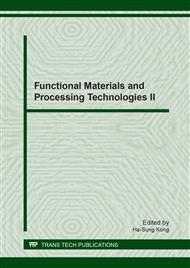p.49
p.56
p.70
p.75
p.82
p.91
p.97
p.103
p.118
Mathematical Modelling of the Calculation of the Stiffness Characteristics of Composite Materials
Abstract:
This article provides an overview of the analysis of the selection of the reduced (equivalent) characteristics of the material. The selection and definition of the elastic characteristics of composite materials depend on many factors: the geometry of the design element of the structure, the stress-strain state and the mathematical model of this state, the calculation methods, and the necessary accuracy of the solution. Technical methods for calculating elements such as rods, plates, and shells are analytically related to the formulation of resolving equations. One of the most common approaches to implementing practical tasks is the method of bringing an inhomogeneous material to a homogeneous isotropic or orthotropic material. In this paper, the most common options for choosing the mechanical characteristics of a composite material are considered. A restriction is introduced - work in the elastic region and the compatibility of deformations of the matrix with reinforcement. These limitations are in good agreement with the reliability of the construction. The article gives a qualitative analysis of formulas depending on the task. A choice of design for a dispersion-hardened material is proposed for a uniform reinforcement distribution for bent elements. The above analysis of formulas for determining the efficiency of physical and mathematical characteristics of composite rods, plates, and shells, allows for the calculation of more complex problems.
Info:
Periodical:
Pages:
82-87
Citation:
Online since:
June 2018
Authors:
Price:
Сopyright:
© 2018 Trans Tech Publications Ltd. All Rights Reserved
Share:
Citation:


